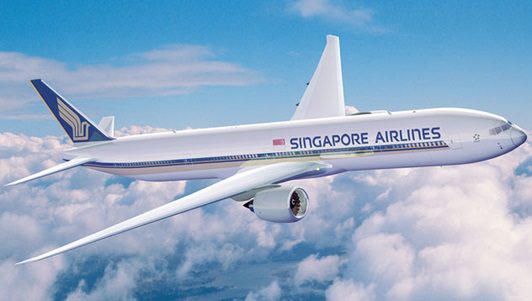 In a harrowing incident, Singapore Airlines Flight 321, en route from London to Singapore, was struck by severe turbulence, resulting in one fatality and multiple injuries. The Boeing 777, registered as 9V-SWM, diverted to Bangkok Suvarnabhumi Airport (BKK) and declared a general emergency, squawking 7700.
In a harrowing incident, Singapore Airlines Flight 321, en route from London to Singapore, was struck by severe turbulence, resulting in one fatality and multiple injuries. The Boeing 777, registered as 9V-SWM, diverted to Bangkok Suvarnabhumi Airport (BKK) and declared a general emergency, squawking 7700.
The turbulence struck shortly before 09:00 London time (16:00 Singapore time) when the aircraft, cruising at 37,000 feet, encountered rapidly developing thunderstorms near the Ayeyarwady Region of Myanmar. The aircraft departed from London Heathrow Airport (LHR) at 22:38, slightly behind its scheduled departure time. It initially climbed to 31,000 feet, later ascending to 37,000 feet.
Incident Details and Response
The aircraft navigated through the turbulent weather and began an unexpected descent towards Bangkok. The severe turbulence caused significant distress onboard, leading to one passenger’s death. The aircraft landed safely in Bangkok at 15:45 local time, and emergency services swiftly attended to the injured passengers.
According to AccuWeather’s Senior Director of Forecasting Operations, Dan DePodwin, the turbulence was likely caused by explosive thunderstorm development along the flight path. “Developing thunderstorms often have strong updrafts, zones of upward-moving air that rise very rapidly, sometimes at more than 100 mph. This can leave pilots with little time to react if it occurs directly in front of the plane,” DePodwin explained.
Historical Context and Expert Analysis
This incident echoes past occurrences where aircraft have encountered severe turbulence. For instance, a Hawaiian Airlines flight in December 2022 experienced a similar situation, leading to multiple injuries. In another case, American Airlines Flight 242 from Seattle to JFK Airport faced severe turbulence near Billings, Montana, in July 1997.
“The radar on commercial planes detects precipitation, but when an updraft develops quickly, precipitation may not yet be present, creating a false sense of security for pilots,” added DePodwin. This technological limitation can result in unexpected turbulence encounters, as likely happened with Flight 321.
Passenger Safety and Airline Response
Singapore Airlines has expressed deep condolences to the deceased passenger’s family and pledged full cooperation with investigative authorities. The airline also assists injured passengers and their families, ensuring they receive necessary medical care and support.
In light of this tragedy, aviation experts call for enhanced turbulence detection technology and improved pilot training to better manage unpredictable weather phenomena. “Safety is paramount, and we must leverage all available technology to prevent such tragic incidents,” emphasized an industry spokesperson.
As investigations continue, the aviation community mourns the loss and looks towards implementing measures to mitigate future turbulence-related risks. The incident is a stark reminder of the unpredictable nature of air travel and the critical importance of advancing safety protocols.
For further updates and a detailed incident analysis, visit AccuWeather and FlightRadar24.
Written by: Michelle Warner



















